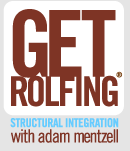“Getting stepped on by a blind rhinoceros may fix your problem, but the odds are pretty slim that he gets you in the perfect spot.”
At the gyms, recreation centers, and parks, you can’t help but see people rolling around on some version of the popular foam roller. They have appeared in fitness classes, are prescribed by professionals for home use by a wide variety of healthcare practitioners including PT’s, Chiropractors, and others.
As a manual therapist (Rolfer) who works with a wide variety of people, including a large number of serious athletes it seems most people have jumped on the foam roller bandwagon. I have been watching this phenomenon for a number of years now and have been asking myself:
Does all this rolling really help us?
What areas of the body should be avoided or “rolled” with great attention?
How are people using these things.. really?
So here are my conclusions thus far:
1. Mindful Rolling is Key! Much of what I see people doing with foam rollers does not seem to be useful in any long lasting way. I think the primary factor is using the foam roller indescriminatly, moving too quickly, rolling over muscles that are being actively contracted. The result is lots of intensity, which we sometimes confuse with progress. Just because it is intense does not mean that there is a positive change happening and it can in fact be a clear signal to STOP. Try slowing way down, using your breath as an awareness tool and relaxing into the input from the roller. If you are finding this difficult to do it may mean the pressure is not useful. Our systems are wired to protect us from injury. As much as we may want to override this process, it is my assertion that real and lasting change comes from working with ourselves, not against.
2. Rollers can Flatten us out. Our myofascial system is a complex web of layers meant to slide gracefully. As an example, the much maligned IT Band lies on top of the most lateral quadriceps muscle (vastus lateralis), which lies on top of the femur. These layers are meant to slide freely from each other as we move through life. I wonder whether repeated rolling may compress these structures down to the point where layers no longer slide freely, thereby actually restricting the very flexibility we were seeking. Let’s not forget that these myofascial networks also include nerves which can easily be compressed and irritated as we compress myofascial layers against underlying bone. It has been my clinical experience that folks who have been using a foam roller on their IT band for years seem to have compressed and restricted layers on the outside of the leg. I wonder whether other manual therapists are observing similar patterns.
I recently saw an advertisement from a company marketing foam rollers that featured a large suction cup that was to counteract this type of compression. The user was encouraged to place the suction cup on the skin following foam rolling to “lift” layers off of each other after intense rolling sessions. Makes one think, huh?
3. Where you think it is… IT AINT! Often where we hurt is not the source of the problem. Many people that I have worked with are foam rolling areas of pain and sensitivity. Sometimes this is just the trick, and sometimes we are actually creating more irritation. Many of the musculo-skeltal problems we face are regional or body wide patterns that result in strain showing up in a particular area. Resolving them requires a holistic approach, which could include a foam roller as a part of the approach. If we find ourselves chasing pain with a foam roller we may want to seek out a good manual therapist to assess what in the kinetic chain may be causing the problem in the first place.
4. Hands are connected to a brain and can perceive, feel, adapt. It is, of course, self promoting for me to tell you that finding a good manual therapist is infinitely better than foam rolling but that does not make it any less true. I think using a foam roller in specific, mindful ways can play a positive role in keeping us feeling good day in and day out.
AND….
A sensitive, educated and listening touch of an experienced manual therapist can result in real resolution of long term strain patterns. Often, differentiating the complex layers mentioned above, through intelligent, vectored, fascial manipulation is the key to restoring function and well-being. An experienced manual therapist can also instruct you on how and where to use a foam roller to get the most benefit without some of the side effects mentioned.
If you are finding yourself chasing your tail with a particular problem, consider getting yourself some good hands-on work.
Some additional tips on Foam Rolling:
1. Slow down. Use your breath as a tool to unlock tension and keep your awareness on the sensation level. Is there a release happening or is more tension being created? Can you breath calmly while using the roller? If not, you may be creating tension.
2. Avoid long periods of compression in a particular area. Be especially attentive when rolling along your spine.
3. Avoid areas where nerves or blood vessels can easily be compressed. Generally speaking do not roll near the back side of the knee, or medial or inside of the leg near the groin. Be attentive when rolling along the hamstring area as the large Sciatic Nerve runs in this area as well. Any radiating sensation should be an indicator that you may be compressing nerves and, trust me, they do not like that.
4. Assess how you feel afterward. Are you moving easier? Feeling more integrated? You should. If not, maybe you are concentrating your efforts on one area and creating imbalances.
5. Softer is better. Yeah, PVC pipe is cheap but your body will respond better to dense foam that will mold to your body to an extent. This can help you avoid compressing nerves, blood vessels and limit the pressure you may apply.
Adam is a Certified Advanced Rolfer and Instructor at The Rolf Institute of Structural Integration in Boulder, CO. With over 10 years experience as a Rolfer, Adam also draws on his long career as an exercise physiologist and competitive endurance athlete. He understands the active lifestyle and finds great satisfaction in helping people to live more easily and happily in their physical bodies. He lives in the Boulder foothills with his wife, daughter and dog Ziggy.


3 Responses to Foam Roller – Friend or Foe?